Nous sommes très honorés d'avoir été retenus parmi de nombreux projets, pour participer au budget participatif de La Région Occitanie, |
| Si vous souhaitez faire une bonne action pour bien démarrer l'année. Nous vous invitons à nous soutenir. Ça va vous prendre 5 minutes et pour nous c'est un énorme coup de pouce! N'hésitez pas à faire voter vos proches et à partager. Il faut voter avant le 25 janvier ! |
Voici le lien pour pouvoir vous s'inscrire pour voter:
Ensuite suivez les instructions ici en bas pour voter:
- Cliquez sur le bouton en haut à droite de la page (CONNEXION) puis allez en bas de la page sur s'inscrire: complétez les données personnelles pour créer une compte: "Prénom", "Nom", "email", "mot de passe", etc. En "code postal ou ville" sélectionnez la ville en Occitanie de votre choix (ex: Toulouse).
- Pour valider les infos, cliquez sur "s'inscrire" et acceptez les conditions, il faut les faire défiler en entier, pour pouvoir cliquer sur "accepter".
- Allez sur votre compte email pour valider le lien envoyé.
- Dans la fenêtre qui s'ouvre, cliquez sur "valider mon compte" ou "Continuer en tant que", si vous avez déjà un compte.
- Revenez sur la page page de "Ma solution pour le climat" ou cliquez sur ce lien: Click ici
- Faire défiler la page des 30 projets proposés, mettre dans la barre "recherche": FUNGUS SAPIENS ou trier par plus récent.
- Sur la page du projet Fungus Sapiens, vous devez cliquer sur "Voter pour" et choisir si vous voulez que votre vote soit public ou anonyme.
Voilà, c'est fait!!
Si vous préférez nous soutenir avec un don, vous pouvez le faire aussi sur:
Notre rêve c'est que l'avenir soit bio-inspiré et bio-fabriqué, remplacer les produits polluants tels que le plastique et le cuir et mieux vivre dans le respect et l'harmonie avec tout ce qui nous entoure.
En nous aidant, vous aidez aussi notre planète, plein de lumière et de belles choses pour vous tous! Joyeuse année 2021!
Symbiotiquement,
Mariana Dominguez Peñalva
En nous aidant, vous aidez aussi notre planète, plein de lumière et de belles choses pour vous tous! Joyeuse année 2021!
Symbiotiquement,
Mariana Dominguez Peñalva
0 Comments

Cher-e-s toutes et tous,
Si aujourd'hui vous recevez ce message, c'est parce que d'une manière ou d'une autre vous faites partie de ma vie ou nous avons croisé notre chemin à un certain point de l'aventure que j'ai entreprise en 2016 avec le projet Fungus Sapiens.
Je crois que cette année écoulée a été une année de beaucoup de changements et de défis tant sur le plan personnel que sociétal.
2020 est venue pour nous secouer tous et nous rappeler ce qui est précieux et ce qu'il faut préserver pour les générations futures.
A titre personnel, j'espère que 2021 sera le point de basculement vers une prise de conscience collective, pour que nous apprenions à vivre dans une sobriété heureuse*, en altérité, sagesse et bon discernement.
Je tiens à vous remercier du fond du cœur pour votre soutien, votre amitié, les conseils, les conversations, les contributions, les rencontres, les rires, le partage de beaux moments.
J'espère que vous avez passé un merveilleux Noël et que vous accueillerez l'année 2021 avec plein de joie, des bonnes résolutions, mais surtout, une bonne santé et une bonne dose de l'énergie qu'il faut, pour les accomplir!
Nos meilleurs vœux pour 2021!!
Symbiotiquement,
Mariana Dominguez Peñalva
Fungus that can capture Gold!!
This is the dream come true of "Alchemists" of all times!!
But there might be a high price to pay after all... we invite you to watch the video and keep reading!
This is the dream come true of "Alchemists" of all times!!
But there might be a high price to pay after all... we invite you to watch the video and keep reading!
When I first saw this video and read the Guardian's article, I was fascinated.
First cause Fungi is my passion and second cause this could have a huge impact in the way we are mining today. This could be a good way to avoid major environmental catastrophes and all the pollution that comes along with gold industry.
So, I decided to go further in my research and here is what I found when I read the original Article to this discovery.
Here you can read a short extract of an other Article in the same subject;
Bioreduction of AuCl4- Ions by the Fungus, Verticillium sp. and Surface Trapping of the Gold Nanoparticles Formed.
"We have demonstrated the reduction of AuCl4 - ions by silanol groups and entrapment of the gold nanoparticles within the pores of mesoporous MCM-41 silicate matrices.[15] To rule out the reduction of AuCl4 - ions by sugars in the cell wall, reaction of the metal ions with different genera of fungi, such as Fusarium oxysporum, Colletotrichum gloeosporioides, and Curvularia lunata were carried out in a manner identical to that for Verticillium sp. No intracellular reduction of the AuCl4 - ions was observed in these cases, thus ruling out a nonspecific mechanism for the growth of the nanoparticles. Indeed, that most of the gold nanoparticles are observed to form on the cytoplasmic membrane of Verticillium cells (Figure 3) rules out the role of cell-wall sugars in the reduction of the AuCl4 - ions."
The problem about Fusarium Oxysporum the "Golden Fungus" and this other Fungus Verticillium sp, along with the other species mentioned above in red, is that they are also responsible of wilt diseases in plants. (Wilting is the loss of rigidity of non-woody parts of plants) and sometimes can even be harmful to humans and insects.
Extracted from Wikipedia;
Extracted from Wikipedia;
This Fungal group is responsible for attacking over 300 different cultivated plants and can persist as a saprotrophic soil organism for more than 15 years.
When infecting ornamental trees such as maples, elms, aspen, ash, beech, catalpa, oak, and others, the first symptoms are midsummer wilting on one side of a tree or branch. The sapwood has greenish or brownish streaks, and the infection can take a few years to progress to the rest of the tree or move rapidly. The fungi universally move up the xylem vessels. In fruit trees, the infection is known as a black heart, and is common in apricots and sometimes affects almond, peach, plum, and avocado trees.
First identified from potatoes in Germany in 1870, this fungus also affects herbaceous ornamentals and vegetables such as chrysanthemums, mints, Lychnis spp., tomatoes, eggplants, okra, and rhubarb, causing wilting and death.
The genus, currently thought to contain 51 species, may be broadly divided into three ecologically based groups - mycopathogens, entomopathogens, and plant pathogens and related saprotrophs.
However, the genus has undergone recent revision into which most entomopathogenic and mycopathogenic isolates fall into a new group called Lecanicillium.
The genus now includes the plant-pathogenic species V. dahliae, V. longisporum, V. albo-atrum, V. nubilum, and V. tricorpus.
Verticillium wilt begins as a mild, local infection, which over a few years will grow in strength as more virile strains of the fungus develop. If left unchecked the disease will become so widespread that the crop will need to be replaced with resistant varieties,(how convenient for monsanto, Syngenta & Co.) or a new crop will need to be planted altogether.
Control of Verticillium can be achieved by planting disease-free plants in uncontaminated soil, planting resistant varieties, and refraining from planting susceptible crops in areas that have been used repeatedly for solanaceous crops.
Soil fumigation can also be used, with chloropicrin,(how convenient for Bayer & Co.) being particularly effective in reducing disease incidence in contaminated fields.
Just for the record: Chloropicrin is harmful to humans. It can be absorbed systemically through inhalation, ingestion, and the skin. At high concentrations, it is severely irritating to the lungs, eyes, and skin. In World War I German forces used to gas the Allies. (Source FAO).
This fungal "green chemistry" solutions for conventional mining methods could be a great alternative to the huge environmental problems caused by Industrial Mining and could also be an efficient biocontrol against Malaria disease and other innovative medical applications.
However, medicine could be more dangerous than the illness itself, we understand so little about the reproduction of this microorganisms, that things could get out of hand easily if this fungi are modified and used out of the Labs.
I hope this new discovery, which seems literally worth its weight in gold, won't become the next food Tchernobyl disaster!
Let's keep an eye on this "innovations".
However, medicine could be more dangerous than the illness itself, we understand so little about the reproduction of this microorganisms, that things could get out of hand easily if this fungi are modified and used out of the Labs.
I hope this new discovery, which seems literally worth its weight in gold, won't become the next food Tchernobyl disaster!
Let's keep an eye on this "innovations".
Gorgeous and weird, lichens have pushed the boundaries of our understanding of nature and our way of studying it.
EDMONTON–Individual lichens may contain up to three different fungi, according to new research from an international team of researchers. This evidence provides new insight into another recent discovery that showed lichen are made up of more than a single fungus and alga, overturning the prevailing theory of more than 150 years.
The new study was a collaboration between the University of Alberta and Uppsala University in Sweden, and led by Veera Tuovinen, a postdoctoral fellow under the supervision of Toby Spribille, assistant professor in UAlberta’s Department of Biological Sciences.
A classic example of symbiosis, lichens have long been known to be the result of a mutually beneficial relationship between fungi and algae. “With the microscopy, we could visualize the mosaic of different organisms within the lichen,” said Tuovinen, who completed her PhD at Uppsala University. “We’re realizing that interactions are much more complex than previously thought.”
The research team used advanced DNA sequencing to examine the genomes of the wolf lichen, a brilliant chartreuse-yellow lichen that grows on trees across western Canada, the United States, and Europe. While the species is well-studied, the researchers found that, almost regardless of where they were sampled, the wolf lichens contained not one or two fungi, but three.
For many, it was a game-changing discovery. “The findings overthrow the two-organism paradigm,” Sarah Watkinson of the University of Oxford told me at the time. “Textbook definitions of lichens may have to be revised.” But some lichenologists objected to that framing, arguing that they’d known since the late 1800s that other fungi were present within lichens. That’s true, Spribille countered, but those fungi had been described in terms that portrayed them as secondary to the main asco-alga symbiosis. To him, it seemed more that the lichens he studied have three core partners.
But that might not be the whole story, either.
Look on the bark of conifers in the Pacific Northwest, and you will quickly spot wolf lichens—tennis-ball green and highly branched, like some discarded alien nervous system. When Tuovinen looked at these under a microscope, she found a group of fungal cells that were neither ascos nor cyphos. The lichens’ DNA told a similar story: There were fungal genes that didn’t belong to either of the two expected groups. Wolf lichens, it turns out, contain yet another fungus, a basidiomycete called Tremella
Previously, scholars had only observed Tremella in galls, or outgrowths, on lichen. “It was thought to be a parasite,” Tuovinen said in the interview. “But we found it in completely normal wolf lichens that don’t have any kinds of bumps.”
The scientists labeled each of the fungi with fluorescent tags so they could visualize the composition of the lichen. The images showed Tremella in the outer layer, called the cortex. “With the microscopy, we could visualize the mosaic of different organisms within the lichen,” Tuovinen says in the press release. “We’re realizing that interactions are much more complex than previously thought.”
Tremella could be actually a ubiquitous infection of lichens, rather than a member of the symbiosis. Experiments that knock out the fungus could determine its role and whether it’s a critical member of the team. “Without this sort of experimental approach, it seems premature to suggest that Tremella represents a 3rd, 4th, or whatever-th symbiont,” Erin Tripp, a lichen researcher at the University of Colorado Boulder, tells The Atlantic.
The new study was a collaboration between the University of Alberta and Uppsala University in Sweden, and led by Veera Tuovinen, a postdoctoral fellow under the supervision of Toby Spribille, assistant professor in UAlberta’s Department of Biological Sciences.
A classic example of symbiosis, lichens have long been known to be the result of a mutually beneficial relationship between fungi and algae. “With the microscopy, we could visualize the mosaic of different organisms within the lichen,” said Tuovinen, who completed her PhD at Uppsala University. “We’re realizing that interactions are much more complex than previously thought.”
The research team used advanced DNA sequencing to examine the genomes of the wolf lichen, a brilliant chartreuse-yellow lichen that grows on trees across western Canada, the United States, and Europe. While the species is well-studied, the researchers found that, almost regardless of where they were sampled, the wolf lichens contained not one or two fungi, but three.
For many, it was a game-changing discovery. “The findings overthrow the two-organism paradigm,” Sarah Watkinson of the University of Oxford told me at the time. “Textbook definitions of lichens may have to be revised.” But some lichenologists objected to that framing, arguing that they’d known since the late 1800s that other fungi were present within lichens. That’s true, Spribille countered, but those fungi had been described in terms that portrayed them as secondary to the main asco-alga symbiosis. To him, it seemed more that the lichens he studied have three core partners.
But that might not be the whole story, either.
Look on the bark of conifers in the Pacific Northwest, and you will quickly spot wolf lichens—tennis-ball green and highly branched, like some discarded alien nervous system. When Tuovinen looked at these under a microscope, she found a group of fungal cells that were neither ascos nor cyphos. The lichens’ DNA told a similar story: There were fungal genes that didn’t belong to either of the two expected groups. Wolf lichens, it turns out, contain yet another fungus, a basidiomycete called Tremella
Previously, scholars had only observed Tremella in galls, or outgrowths, on lichen. “It was thought to be a parasite,” Tuovinen said in the interview. “But we found it in completely normal wolf lichens that don’t have any kinds of bumps.”
The scientists labeled each of the fungi with fluorescent tags so they could visualize the composition of the lichen. The images showed Tremella in the outer layer, called the cortex. “With the microscopy, we could visualize the mosaic of different organisms within the lichen,” Tuovinen says in the press release. “We’re realizing that interactions are much more complex than previously thought.”
Tremella could be actually a ubiquitous infection of lichens, rather than a member of the symbiosis. Experiments that knock out the fungus could determine its role and whether it’s a critical member of the team. “Without this sort of experimental approach, it seems premature to suggest that Tremella represents a 3rd, 4th, or whatever-th symbiont,” Erin Tripp, a lichen researcher at the University of Colorado Boulder, tells The Atlantic.
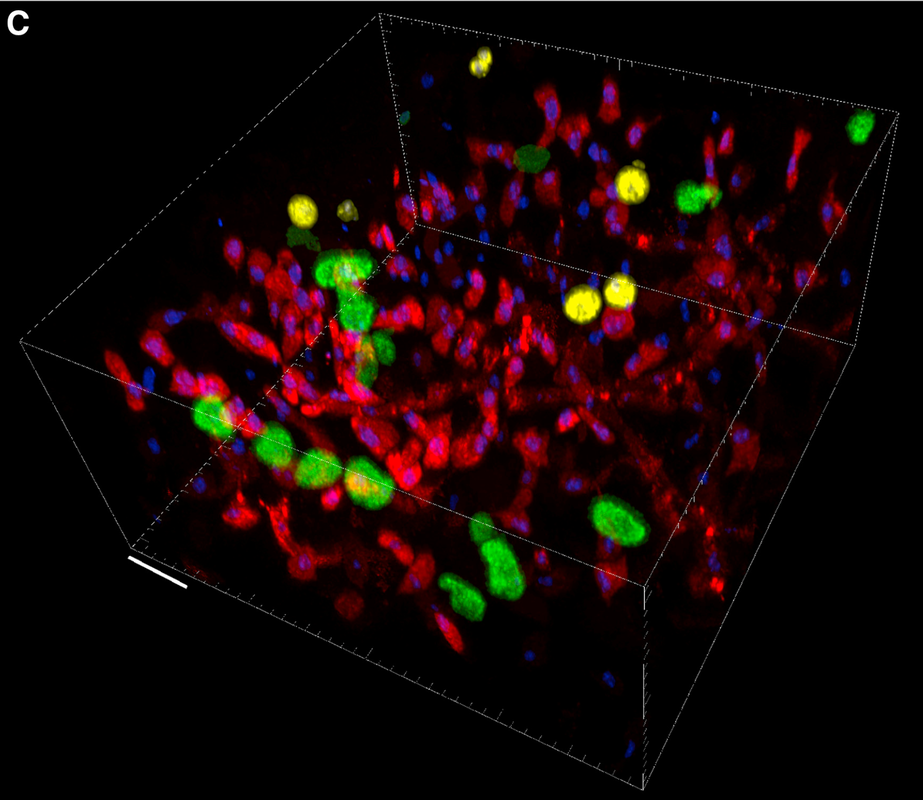
This figure reveals the composition of the cortex of a wolf lichen, with Tremella lethariae labeled green, Letharia vulpina (the ascomycete fungus) and algal autofluorescence in red, Cyphobasidium fungus tagged yellow, and cell nuclei in blue. V. TUOVINEN ET AL., CURR BIOL, DOI:10.1016/J.CUB.2018.12.022, 2019
“Our findings from two years ago challenged the long-held view that lichens were made up of a single fungus and alga,” explained Spribille. “This new research complicates the nature of these relationships even further. For one thing, it means that no two lichens necessarily have the same medley of partners.”
“What this means in concrete terms to the overall symbiosis is the big question,” added Hanna Johannesson, associate professor at Uppsala University and joint supervisor of the research. “What we are finding now is basically what researchers since the 1800’s would have liked to know–who are the core players, what function do they perform, all the cards on the table.”
With the roster of players present in wolf lichens becoming clear, Johannesson and Spribille want to figure out how each member benefits in the give-and-take world of symbiosis. The scientists are particularly interested in the ability of fungi and algae to construct architectural structures from microscopic building blocks.
“The fungi and algae that make lichens are doing very interesting things in a confined space,” says Spribille. “Knowing that there might not be any one way to pigeonhole the relationship is very helpful moving forward.”
The research was conducted with collaborators from Uppsala University and the Swedish University of Agricultural Sciences, as well as Indiana University in the United States. The paper, “Two basidiomycete fungi in the cortex of wolf lichens,” was published in Current Biology (doi: 10.1016/j.cub.2018.12.022).
Other article in the subject!:
South American lichen found to have 126 different species of fungi.
A team of researchers with members from the U.S. and several South American countries has found that a type of lichen that grows in several parts of Central and South America consists of at least 126 species of fungi and possibly as many as 400. As the team notes in their paper published in Proceedings of the National Academy of Sciences, until very recently, the lichen was believed to have just one species of fungus.
Lichen is an organism that exists as a partnership between a fungus and photosynthetic partner—it's a photobiont. The main mass of any given lichen generally consists of fungal filaments which host algal cells. In the study in South America, the researchers looked at Dictyonema glabratum, which recently was divided into two separate genera, (Cora and Corella) with initial analysis suggesting 16 distinct species of fungi.
D. glabratum (lichen are named after the fungal component) is considered to be ecologically important to South America as it is one among many lichen that fix atmospheric nitrogen into the soil, which makes them natural fertilizers. D. glabratum is generally small, about the size of human fist, and grows in curly masses around other objects, such as tree trunks. In this new effort the researchers expanded on genetic research conducted by other teams that have found that some species of organisms are actually more than one—African elephants are actually two species, for example and there are two distinct species of the Nile crocodile and four species of Killer whales. Curious after the reclassification of D. glabratum, the research team used DNA barcoding and performed phylogenetic analysis on 356 samples and found an astonishing 126 different species of fungi.
The team next created a grid map of the range of the lichen, from Central and South America to the Caribbean islands and used it to create a computer model—a simulation from it predicted that it's likely the true number of fungi species in the lichen is close to 452.
Lichen is an organism that exists as a partnership between a fungus and photosynthetic partner—it's a photobiont. The main mass of any given lichen generally consists of fungal filaments which host algal cells. In the study in South America, the researchers looked at Dictyonema glabratum, which recently was divided into two separate genera, (Cora and Corella) with initial analysis suggesting 16 distinct species of fungi.
D. glabratum (lichen are named after the fungal component) is considered to be ecologically important to South America as it is one among many lichen that fix atmospheric nitrogen into the soil, which makes them natural fertilizers. D. glabratum is generally small, about the size of human fist, and grows in curly masses around other objects, such as tree trunks. In this new effort the researchers expanded on genetic research conducted by other teams that have found that some species of organisms are actually more than one—African elephants are actually two species, for example and there are two distinct species of the Nile crocodile and four species of Killer whales. Curious after the reclassification of D. glabratum, the research team used DNA barcoding and performed phylogenetic analysis on 356 samples and found an astonishing 126 different species of fungi.
The team next created a grid map of the range of the lichen, from Central and South America to the Caribbean islands and used it to create a computer model—a simulation from it predicted that it's likely the true number of fungi species in the lichen is close to 452.
In retrospect, the lichen may not have been hiding its many species, as evidence offering clues was abundant—they come in several colors, grow on several different surfaces and some even have unique features such as crinkled margins or fine hairs. Researchers have likely missed such clues, the researchers note, due to most studies being conducted using specimens that had been dried and stored for such purposes.
Sources:
Scienmag
The scientist
The Atlantic
Phys Org
They've been present on Earth for 450 million years and taken over all spaces...oh, and some of them are delicious! ?
En français...
Ils sont sur Terre depuis 450 millions d'années et, depuis le temps, ils ont colonisés tous les recoins de la planète (et même nos assiettes).?
A giant individual of the fungus, Armillaria gallica, or honey mushroom, first studied 25 years ago by James B. Anderson, a professor emeritus of biology at the University of Toronto Mississauga, is not only alive and well but is older and larger than Anderson originally estimated.
The fungus's cellular mutations may offer an interesting counterpoint to cancer cell growth, says Anderson, a specialist in fungal genetics, population biology and evolution.
"I assumed it would still be there nearly three decades on and realized it would be a great opportunity to study the dynamics of naturally occurring mutations in a cell population that is spatially organized," he says.
In 1992, Anderson and his colleagues estimated that the honey mushroom, which is growing in a forest on Michigan's Upper Peninsula, was 1,500 years old, weighed 100,000 kilograms and covered 15 hectares. Using current research and analytic techniques, Anderson took additional samples in between 2015 and 2017 and can say with confidence that the mushroom is at least 2,500 years old, weighs 400,000 kilograms and covers about 70 hectares.
"I view these estimates as the lower bound," Anderson says. "The fungus could actually be much older. However, we think we have circumscribed its entire dimensions, which wasn't the case in 1992."
Although A. gallica, like most fungi, produces mushrooms above ground, it also has a network of underground tendrils called the mycelium that keeps the fungus alive by searching for food sources. The mycelium feeds on soil or decaying plant matter. A. gallica's tendrils are organized into organs called rhizomorphs and, unlike other fungi, its rhizomorphs also seek out live wood as a source of nourishment. Armillaria can infect a live tree until it dies and then continues feeding on it afterward.
"It has a large role in decaying wood and in causing root disease," Anderson says.
Given major advances in genetic research techniques, Anderson was especially eager to sample the fungus and compare it to a reference genome to see whether variation had occurred over time and discern the extent of that variation. To do so, he needed a search strategy, and he turned to a former student-turned-professor, Myron L. Smith of Carleton University, and two other colleagues at Carleton, for the computational analysis.
Anderson, Smith and Professor Johann Bruhn from the University of Missouri-Columbia collected 245 samples during four visits to the site of the fungus over three years, "each of which led to many months of work in the lab," Anderson says.
He found that the mutation rate was very low and that even frequently occurring mutations "didn't have much of an impact on the fitness of the organism or on its appearance. What we think that tells us is that there must be some mechanism by which the fungus protects itself from mutations."
The researchers suspect that the fungi may localize mutations in areas where they couldn't cause much damage. "In Armillaria, this would mean that cells in the rhizomorph tip would retain the old DNA, whereas the subtending cells (committed to local, dead-end development) would receive the new DNA. In this way, the rhizomorph tips perpetuating the lineage would retain fewer mutations than cells committed to local differentiation," the researchers write in their article, published online in a preprint by bioRxiv.
Anderson believes it would be an interesting exercise to examine the DNA mechanisms at work in stable A. gallica and in cancer cells, which are highly unstable.
"It could be an interesting point of comparison," he says. "Cancer is so unstable, mutates at a high rate and is prone to genomic changes, while A. gallica is a very persistent organism with few mutations."
Anderson, who has since retired from U of T Mississauga, says it was the perfect note on which to end his formal career since "I was just doing what I love."
Read more at: phys.org/news/2018-11-humongous-fungus-years-armillaria-gallica.html
Original source: royalsocietypublishing.org/doi/10.1098/rspb.2018.2233
The fungus's cellular mutations may offer an interesting counterpoint to cancer cell growth, says Anderson, a specialist in fungal genetics, population biology and evolution.
"I assumed it would still be there nearly three decades on and realized it would be a great opportunity to study the dynamics of naturally occurring mutations in a cell population that is spatially organized," he says.
In 1992, Anderson and his colleagues estimated that the honey mushroom, which is growing in a forest on Michigan's Upper Peninsula, was 1,500 years old, weighed 100,000 kilograms and covered 15 hectares. Using current research and analytic techniques, Anderson took additional samples in between 2015 and 2017 and can say with confidence that the mushroom is at least 2,500 years old, weighs 400,000 kilograms and covers about 70 hectares.
"I view these estimates as the lower bound," Anderson says. "The fungus could actually be much older. However, we think we have circumscribed its entire dimensions, which wasn't the case in 1992."
Although A. gallica, like most fungi, produces mushrooms above ground, it also has a network of underground tendrils called the mycelium that keeps the fungus alive by searching for food sources. The mycelium feeds on soil or decaying plant matter. A. gallica's tendrils are organized into organs called rhizomorphs and, unlike other fungi, its rhizomorphs also seek out live wood as a source of nourishment. Armillaria can infect a live tree until it dies and then continues feeding on it afterward.
"It has a large role in decaying wood and in causing root disease," Anderson says.
Given major advances in genetic research techniques, Anderson was especially eager to sample the fungus and compare it to a reference genome to see whether variation had occurred over time and discern the extent of that variation. To do so, he needed a search strategy, and he turned to a former student-turned-professor, Myron L. Smith of Carleton University, and two other colleagues at Carleton, for the computational analysis.
Anderson, Smith and Professor Johann Bruhn from the University of Missouri-Columbia collected 245 samples during four visits to the site of the fungus over three years, "each of which led to many months of work in the lab," Anderson says.
He found that the mutation rate was very low and that even frequently occurring mutations "didn't have much of an impact on the fitness of the organism or on its appearance. What we think that tells us is that there must be some mechanism by which the fungus protects itself from mutations."
The researchers suspect that the fungi may localize mutations in areas where they couldn't cause much damage. "In Armillaria, this would mean that cells in the rhizomorph tip would retain the old DNA, whereas the subtending cells (committed to local, dead-end development) would receive the new DNA. In this way, the rhizomorph tips perpetuating the lineage would retain fewer mutations than cells committed to local differentiation," the researchers write in their article, published online in a preprint by bioRxiv.
Anderson believes it would be an interesting exercise to examine the DNA mechanisms at work in stable A. gallica and in cancer cells, which are highly unstable.
"It could be an interesting point of comparison," he says. "Cancer is so unstable, mutates at a high rate and is prone to genomic changes, while A. gallica is a very persistent organism with few mutations."
Anderson, who has since retired from U of T Mississauga, says it was the perfect note on which to end his formal career since "I was just doing what I love."
Read more at: phys.org/news/2018-11-humongous-fungus-years-armillaria-gallica.html
Original source: royalsocietypublishing.org/doi/10.1098/rspb.2018.2233
A single mushroom can “catapult” up to 30,000 spores per second at speeds of up to 4mph. There are around a billion mushroom spores above every square metre of Earth’s surface. These spores provide a scaffold for water to condense and seed rain droplets.
When it comes to rainmaking power, fungi spores are number one.
Other types of particles such as pollen, bacteria, dust and pollution also seed rain, but scientists have seen what makes mushroom and other fungi spores such potent rainmakers.
Under an electron microscope, scientists saw water droplets form on the water-attracting spores in humid air. Over time, those droplets evolved into large water drops that may produce rainclouds.
The effect of spore rainmakers is efficient production of rain over forests, even during warmer months. Plus, the process does not seed rain using pollutants, which is beneficial to ecosystems.
See this video for more info or check the research article on this link.
Other types of particles such as pollen, bacteria, dust and pollution also seed rain, but scientists have seen what makes mushroom and other fungi spores such potent rainmakers.
Under an electron microscope, scientists saw water droplets form on the water-attracting spores in humid air. Over time, those droplets evolved into large water drops that may produce rainclouds.
The effect of spore rainmakers is efficient production of rain over forests, even during warmer months. Plus, the process does not seed rain using pollutants, which is beneficial to ecosystems.
See this video for more info or check the research article on this link.
| Neurogenesis (creation of new neurons) is a biological fact that has meant the fall of one of the great dogmas of biology, according to which the nerve cells were the same throughout life. In this process, the lion's mane (Hericium erinaceus) has proved to be the most efficient nutraceutical for renewing neurons in the human brain due to its precursor activity in the production of myelin and NGF. |
In 1998 the Spanish researcher José Manuel García Verdugo (University of Valencia) in collaboration with the Mexican Arturo Álvarez-Buylla (University of California) demonstrated that the renewal of neurons is the work of neuronal stem cells with the characteristics of astrocytes. His work, published in Nature, described the "cradle" of neuronal stem cells, located in the subventricular zone.
For several years, numerous studies have appeared that confirm that there is constant neurogenesis in our brain. In natural circumstances, in the absence of injury or illness, to prevent cell death, neurons are equipped with mechanisms of self-repair and constant self-reparation.
But also, if we suffer an injury (a stroke, a skull fracture or suffer from a degenerative disease such as Alzheimer), thousands of neurons are destroyed and circuits are disconnected between them making it impossible to perform the functions they have entrusted.
Nerve Growth Factor (NGF)
To correct this, chemicals called neurotrophins or nerve growth factors (Nerve Growth Factor, NGF) are synthesized in specialized neurons and are the mediators of the process. In recent years there has been an increasing interest in artificially promoting neurogenesis, acting on the genes, proteins and trophic factors that regulate it.
Hercenonas and erinacinas
In this last section, the lion's mane plays a crucial role in neurogenesis. This fungus (autochthonous in our forests) contains hercenic (A, B, C, D and E), as well as ericenins, which induce the production of the hormone nerve growth factor (NGF).
How does lion's mane help your memory?
Different trials have shown the action of the hericenonas as stimulators of the renewal at two levels:
Neuronal regeneration (stimulating the production of NGF). This factor plays an important role in peripheral neuropathies and especially those related to diabetes.
Regeneration of the protective myelin layer. This is a decisive factor in the treatment of multiple sclerosis and other neurodegenerative diseases.
Other studies have shown its adaptogenic action against stress, insomnia, memory recovery or the development of neurodegenerative diseases such as Parkinson's or Alzheimer's.
It has been demonstrated that the neurogenesis-promoting substances existing in lion's mane are able to cross the selective blood-brain barrier, thus entering into direct contact with the astrocytes.
This is one of the many endangered species of mushrooms in our forests, therefore this mushroom must not be collected in the wild. But If you want to consume it, it's highly recommended to buy it from growers with an organic certification.
For several years, numerous studies have appeared that confirm that there is constant neurogenesis in our brain. In natural circumstances, in the absence of injury or illness, to prevent cell death, neurons are equipped with mechanisms of self-repair and constant self-reparation.
But also, if we suffer an injury (a stroke, a skull fracture or suffer from a degenerative disease such as Alzheimer), thousands of neurons are destroyed and circuits are disconnected between them making it impossible to perform the functions they have entrusted.
Nerve Growth Factor (NGF)
To correct this, chemicals called neurotrophins or nerve growth factors (Nerve Growth Factor, NGF) are synthesized in specialized neurons and are the mediators of the process. In recent years there has been an increasing interest in artificially promoting neurogenesis, acting on the genes, proteins and trophic factors that regulate it.
Hercenonas and erinacinas
In this last section, the lion's mane plays a crucial role in neurogenesis. This fungus (autochthonous in our forests) contains hercenic (A, B, C, D and E), as well as ericenins, which induce the production of the hormone nerve growth factor (NGF).
How does lion's mane help your memory?
Different trials have shown the action of the hericenonas as stimulators of the renewal at two levels:
Neuronal regeneration (stimulating the production of NGF). This factor plays an important role in peripheral neuropathies and especially those related to diabetes.
Regeneration of the protective myelin layer. This is a decisive factor in the treatment of multiple sclerosis and other neurodegenerative diseases.
Other studies have shown its adaptogenic action against stress, insomnia, memory recovery or the development of neurodegenerative diseases such as Parkinson's or Alzheimer's.
It has been demonstrated that the neurogenesis-promoting substances existing in lion's mane are able to cross the selective blood-brain barrier, thus entering into direct contact with the astrocytes.
This is one of the many endangered species of mushrooms in our forests, therefore this mushroom must not be collected in the wild. But If you want to consume it, it's highly recommended to buy it from growers with an organic certification.
| To buy it fresh, in powder or capsules, you can place your purchase here: |
We want to share this wonderful film with you!
Nous sommes ravis de partager ce merveilleux film avec vous...
Une plongée passionnante dans un monde méconnu, mystérieux et tout à fait fascinant. Les images des champignons sont superbes. Évoluant sur terre depuis un milliard d'années, les champignons ont encore énormément de secrets à révéler. Et l'homme pourrait bénéficier largement de ces incroyables découvertes. Les mycètes ou fungi ne sont ni des plantes ni des animaux. Certains de leurs aspects les rapprochent des végétaux, mais comme les animaux, ils doivent manger d’autres organismes pour vivre. Les champignons que les promeneurs admirent en forêt n’en représentent qu’une toute petite partie. Leur corps change constamment, dans une recherche incessante de nourriture. Ils forment donc un règne en soi, qui n’a pas encore livré tous ses secrets aux scientifiques. La réalisatrice a suivi Rob Dunn et Anne A. Madden, biologistes, qui les étudient.
Documentaire ARTE
Une plongée passionnante dans un monde méconnu, mystérieux et tout à fait fascinant. Les images des champignons sont superbes. Évoluant sur terre depuis un milliard d'années, les champignons ont encore énormément de secrets à révéler. Et l'homme pourrait bénéficier largement de ces incroyables découvertes. Les mycètes ou fungi ne sont ni des plantes ni des animaux. Certains de leurs aspects les rapprochent des végétaux, mais comme les animaux, ils doivent manger d’autres organismes pour vivre. Les champignons que les promeneurs admirent en forêt n’en représentent qu’une toute petite partie. Leur corps change constamment, dans une recherche incessante de nourriture. Ils forment donc un règne en soi, qui n’a pas encore livré tous ses secrets aux scientifiques. La réalisatrice a suivi Rob Dunn et Anne A. Madden, biologistes, qui les étudient.
Documentaire ARTE

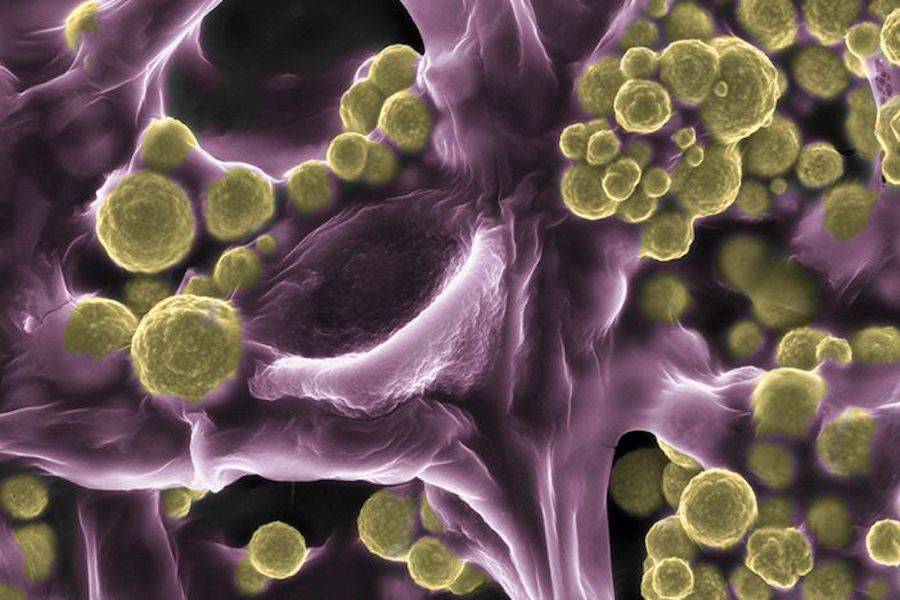

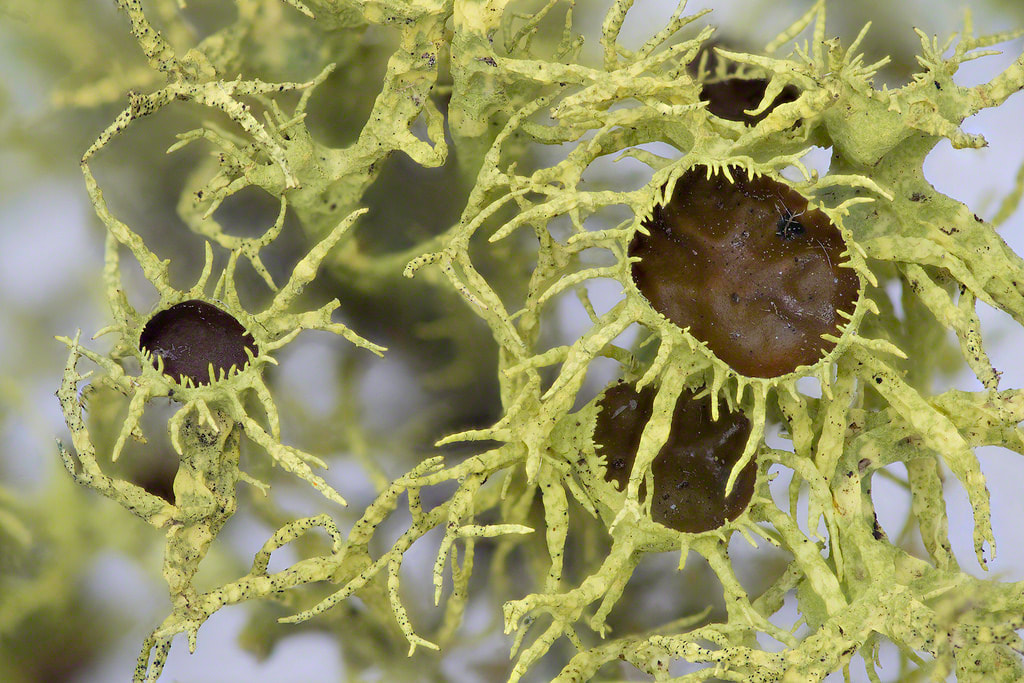
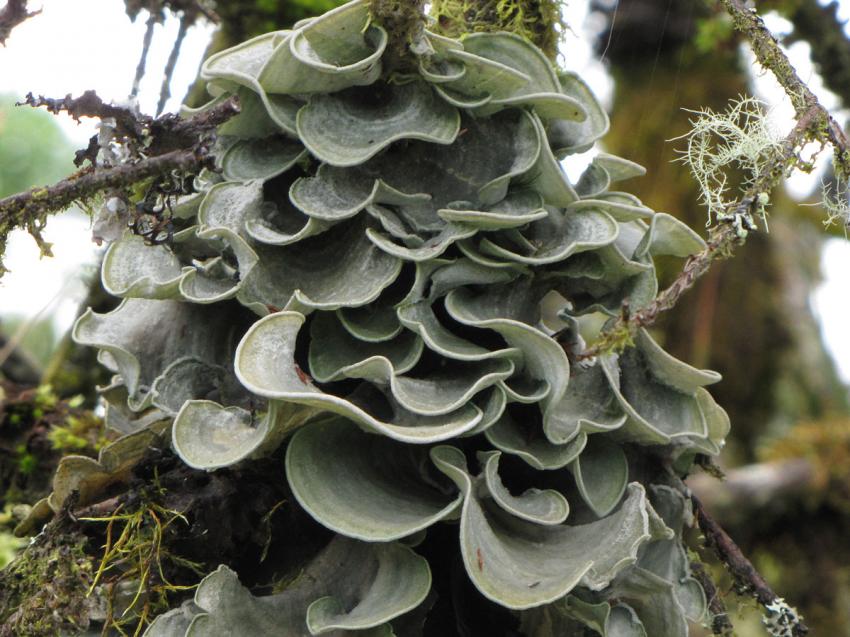
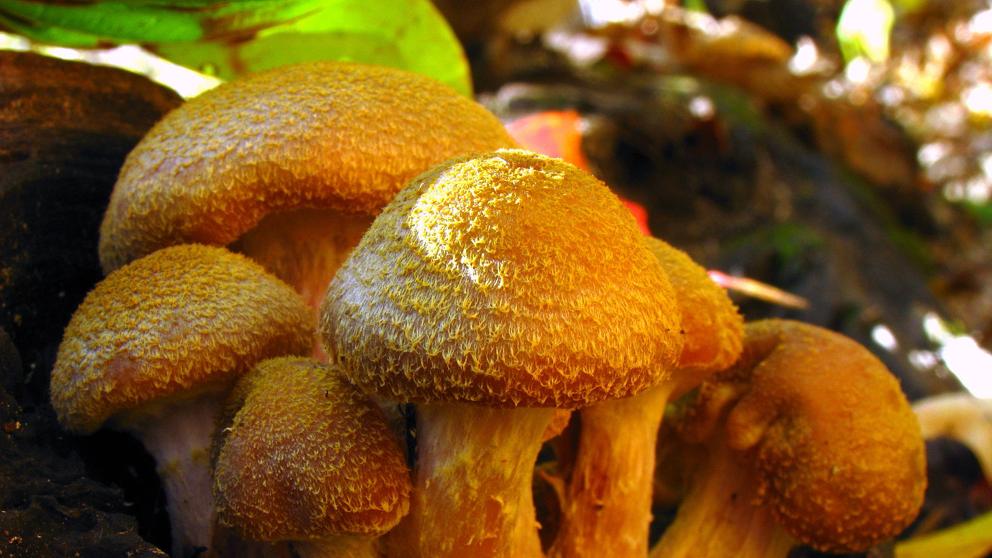
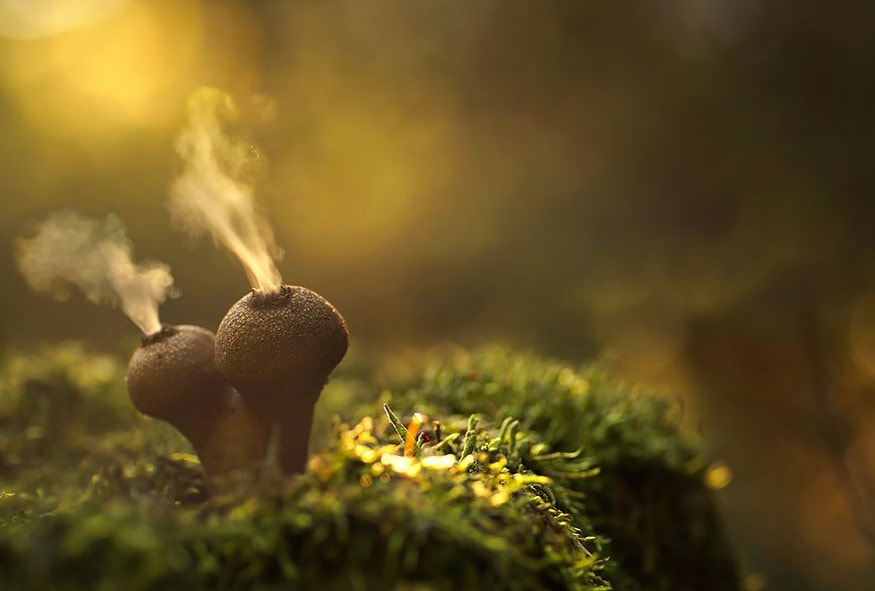
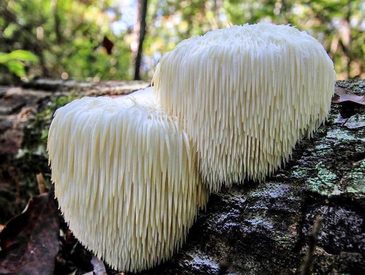

 RSS Feed
RSS Feed